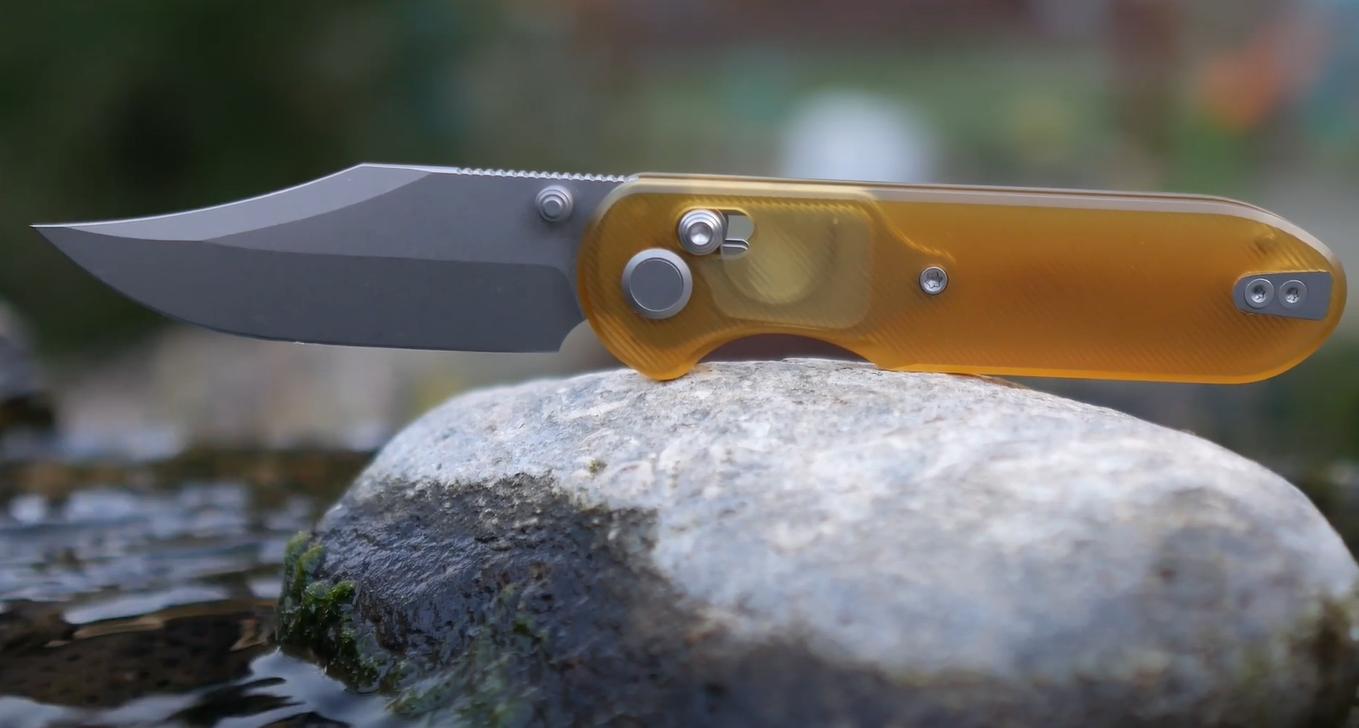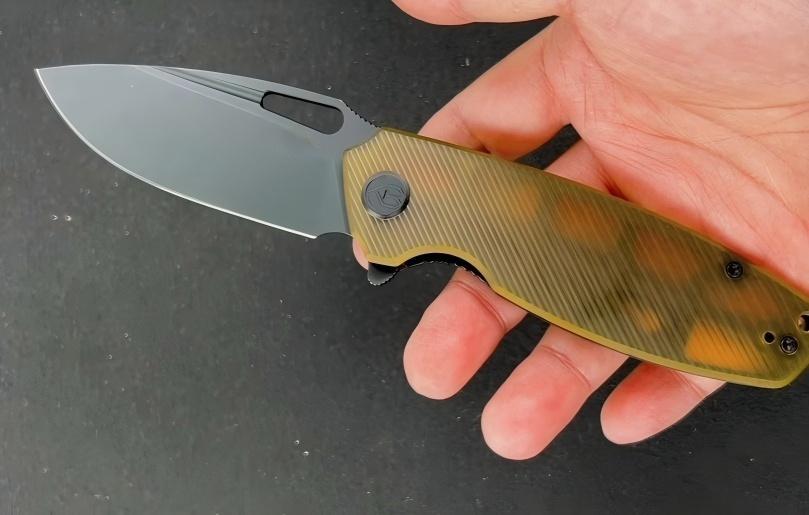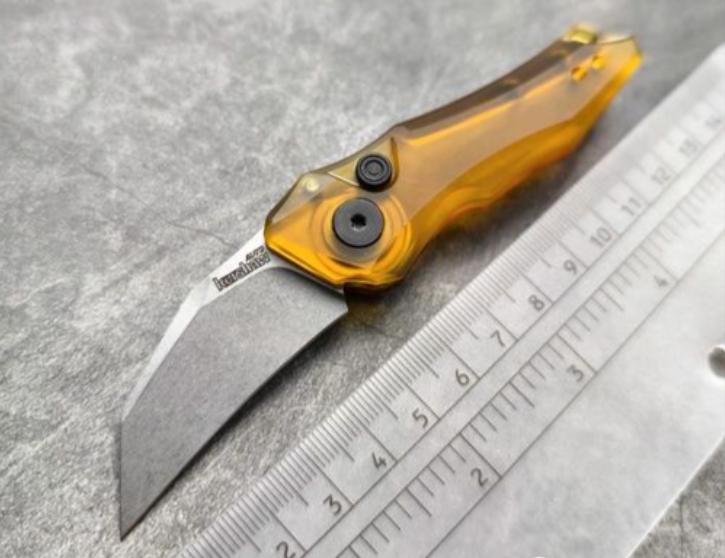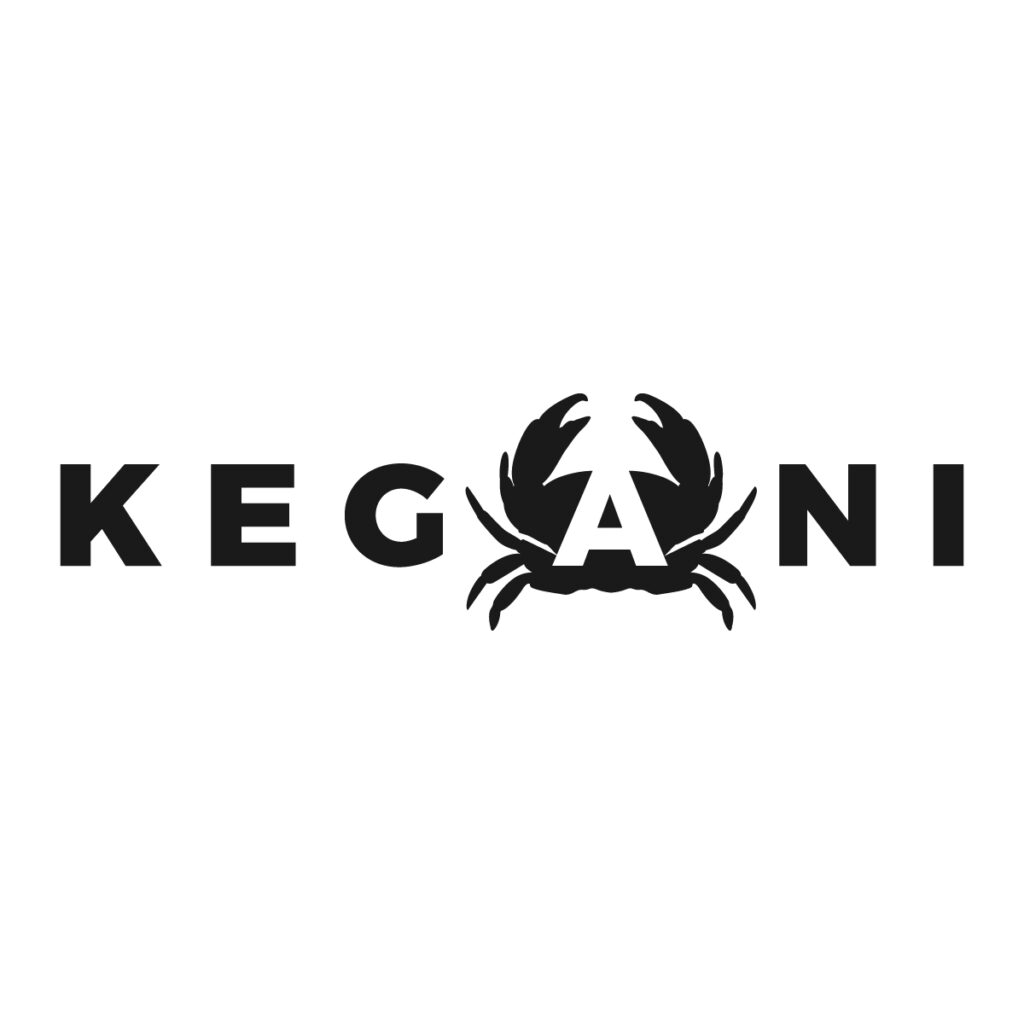Knife handles are getting weirder, and better. In recent years, Ultem has gone from a material used in aerospace and medical tools to showing up on knife scales across premium and budget brands alike.
But what exactly is Ultem, and should you consider it for your next knife product line or OEM order?
In this guide, we’ll break down what Ultem is, why some buyers love it, what the drawbacks are, and how it stacks up against traditional materials like G-10, FRN, Micarta, and Lexan.
What is Ultem?

Ultem is the brand name for polyetherimide (PEI), a high-performance thermoplastic known for its strength, heat resistance, and chemical stability.
It’s incredibly tough, lightweight, and resistant to UV exposure, making it ideal for harsh environments.
In the knife world, Ultem stood out for one unique trait: it’s translucent. Most Ultem scales come in a warm amber tone, letting you see the knife’s inner hardware.
That visual flair gave it instant appeal in the EDC and collector scene.
Why knife brands are using it
Ultem handles started popping up around 2021, mostly on limited runs. Since then, more brands have jumped on board.
Some notable examples:
- Civivi launched Ultem versions of the Elementum, Conspirator, and Vision FG.
- Pro-Tech released an SBR automatic with Ultem scales as a BladeHQ exclusive.
- Microtech used Ultem top scales on select Ultratech and Combat Troodon models.
- Kershaw added it to their Livewire OTF knife.
- Even Tactile Knife Co. tried it on their lightweight Bexar slipjoint.
For many of these, Ultem wasn’t just a gimmick, it served a purpose. The material kept the knife light, showed off internal mechanisms, and added collector appeal.
Start Working with a Professional Now
How is Ultem as a knife handle material

Knife fans have mixed, but honest, opinions on Ultem. The material itself is rigid, ultra-light, and smooth to the touch.
It doesn’t flex, doesn’t absorb moisture, and doesn’t deform with heat. That alone makes it practical for EDC knives, especially folders and OTFs.
But what really helps is the real feedback from the community:
- Tactile experience: Some users say Ultem feels like “hard plastic, slick, but not cheap.”
- Weight perception: Others love how lightweight it is: “It’s the lightest knife I own, but still feels sturdy.”
- Color opinions: The translucent amber color? Totally polarizing. Some describe it as “fossilized resin”, others call it “nicotine plastic.”
Functionally, Ultem holds up well to daily use. It resists scratches better than FRN or polycarbonate, doesn’t stain like Micarta, and won’t crack under normal pressure.
Just don’t expect a lot of grip unless the handle is contoured or textured. In short, it performs well, but the look and feel are a matter of taste.
Where Ultem Was Used Before Knives
Before knife brands got interested, Ultem was already a go-to material in industries like aerospace, automotive, and medical tech. You’ll find it in aircraft interiors, electrical connectors, sterilizable medical tools, and even guitar picks and 3D printer parts.
Why? Because Ultem can handle extreme temperatures, aggressive chemicals, and physical stress, without breaking down or deforming.
It’s also approved for food-contact applications and often used in machinery that needs to be cleaned with strong solvents. In other words, it’s serious industrial-grade stuff, long before anyone thought to cut it into knife scales.
Pros of Ultem Knife Handles

Let’s talk about the benefits. Here’s what Ultem does well:
- Lightweight but Strong: Ultem has one of the best strength-to-weight ratios in the plastic world. You can make a handle that’s ultra-thin and still durable.
- Extremely Heat and Chemical Resistant: It stays stable up to 200°C+ and resists solvents, oils, cleaners, pretty much anything you’ll throw at it.
- Doesn’t Absorb Moisture: That means no swelling, shrinking, or cracking. It’s ideal for use in wet environments, kitchens, or EDC carry.
- UV Stable and Long-Lasting: Unlike some plastics that yellow or degrade in the sun, Ultem is built to last.
- Won’t Scratch Other Gear: Unlike metal or textured G-10, Ultem’s smooth finish won’t gouge your phone or keys in your pocket.
- Great for Showcasing Mechanisms: The see-through nature makes it perfect for knives with interesting lock systems or internal milling.
Cons of Ultem Knife Handles
It’s not all perfect though. Here’s where Ultem gets mixed reactions:
- Limited Color Options: Natural Ultem is always amber. Black versions exist, but they lose transparency. If you want bright colors, look elsewhere.
- Smooth = Slippery: Unless textured during production, Ultem handles can feel slick. It’s fine for casual use, but not ideal for gloves or wet hands.
- Can Crack Under Stress: It’s rigid, but not indestructible. Some users reported cracking around screws if the scales are too thin or over-tightened.
- Expensive: Ultem costs more than FRN or G-10. A knife with Ultem scales often comes at a premium, even if the blade steel stays the same.
- Doesn’t Develop Patina: Unlike Micarta or copper, Ultem doesn’t age or evolve. What you see on Day 1 is what you’ll see on Day 1000.
Ultem vs Other Handle Materials

Here’s how Ultem stacks up against some common alternatives:
| Material | Grip | Strength | Heat Resistance | Aesthetics | Weight | Cost |
| Ultem | Moderate | High | Excellent | Amber, translucent | Very low | High |
| G-10 | High | High | Very good | Many colors, textured | Medium | Medium |
| FRN | High | Moderate | Fair | Budget-friendly look | Very low | Low |
| Micarta | High | Medium | Fair | Natural, rustic | Medium | Medium |
| Lexan | Low | Moderate | Poor | Fully transparent | Low | Low-Mid |
Let’s break that down:
Ultem vs G-10
Ultem is lighter and more resistant to chemicals and heat. But G-10 wins on grip and color variety.
Ultem vs FRN
Ultem feels more premium, is stiffer, and holds up better long-term. FRN is more impact-resistant and budget-friendly.
Ultem vs Micarta
Micarta is all about feel and character—it develops a patina and has a warm, grippy surface. Ultem is sleek, sterile, and performance-driven.
Ultem vs Lexan
Lexan may be clearer, but it scratches easily, turns yellow in sunlight, and doesn’t hold up nearly as well. Ultem is the better transparent material for long-term use.
Should You Use Ultem as a Seller?
It depends on your target audience and price point.
If you’re selling modern EDC knives, especially OTFs or flippers, Ultem can add visual value and keep things lightweight. It’s especially appealing in limited runs or collector editions.
If you’re working with OEMs, Ultem is a good option to offer as an upgrade material, ideal for clients who want something different without going full titanium or carbon fiber.
It’s also a great talking point when offering custom options to buyers looking to buy knives wholesale or launch a new line.
That said, it’s not ideal for budget lines or traditional knives. For those, stick with FRN, G-10, or Micarta.
Start Working with a Professional Now
Wrapping Up
Ultem knife scales are a fresh take on modern knife design.
They’re tough, light, and undeniably different. Whether you love the amber look or not, there’s no denying Ultem brings something new to the table, especially for EDC brands looking to stand out.
Is it for everyone? No. But if you’re a seller targeting enthusiasts, or you’re designing knives that need to be lightweight, transparent, and high-performance, Ultem might just be the upgrade your lineup needs.
Kegani works closely with trusted China knife manufacturers to bring high-quality materials like Ultem into scalable production, without compromising on finish or durability.
Interested in sourcing Ultem knife scales or launching your own OEM model with this material? Get in touch with Kegani to explore manufacturing options from China you can trust.
FAQs
Is Ultem Stronger than G-10 or Micarta?
Not necessarily stronger, but different. Ultem is more rigid and heat-resistant than Micarta, and it doesn’t absorb moisture like Micarta or FRN. G-10 may have better grip and is tougher under flex, while Ultem offers more stability in extreme temperatures.
Does Ultem Break or Crack Easily?
Ultem is durable under normal use, but it can crack if scales are made too thin or over-tightened at the screws. It’s rigid, not flexible so it’s not as forgiving as FRN or rubberized composites.
Why Do Some People Dislike the Amber Color?
It’s a matter of taste. Some users love Ultem’s translucent, almost retro amber glow. Others say it reminds them of old plastic or even cigarette stains. Black and dyed versions exist, but they usually lose the transparent effect.
Is Ultem Good for EDC Knives?
Yes, especially for lightweight folders and OTF knives. It’s heat- and chemical-resistant, doesn’t swell in wet conditions, and gives modern knives a unique look. Just make sure the design includes texturing or contouring for better grip.
Can Ultem Handles Be Textured or Customized?
Yes, but it requires precise machining. Some makers add CNC patterns or milled grooves to improve grip. Because it’s so rigid, laser engraving and shaping work well but molding or bending isn’t an option.

